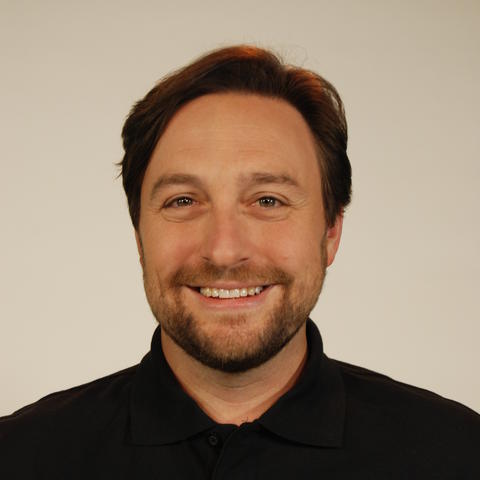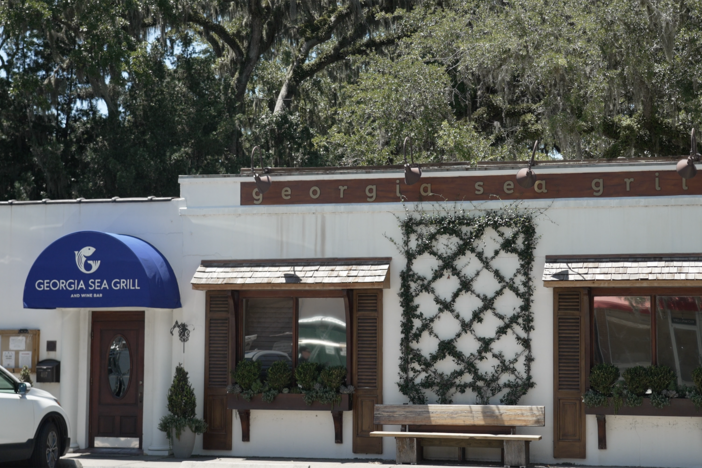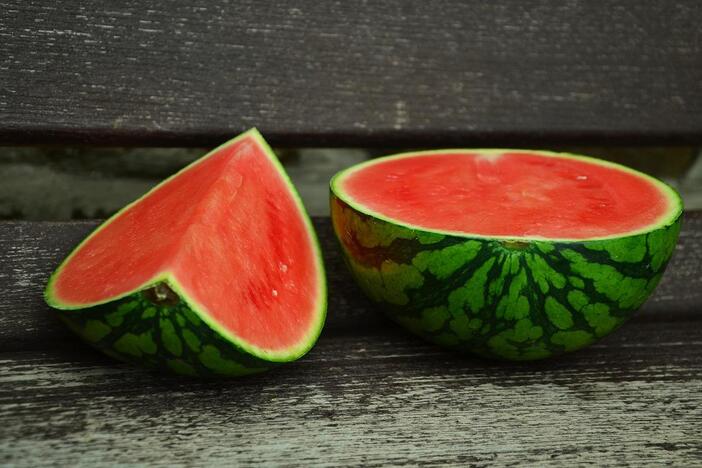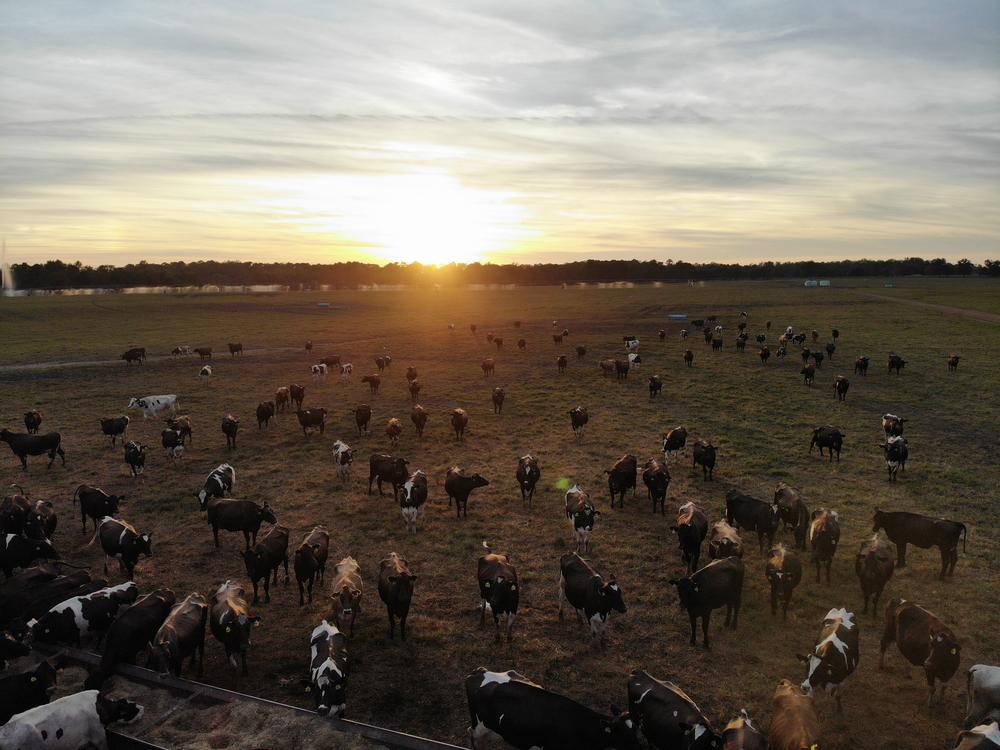
Section Branding
Header Content
A Fork in the Road Podcast: Sweet Grass Dairy
Primary Content
Sweet Grass Dairy is the home of Georgia's cheesemaking pioneers. Meet Jessica and Jeremy Little, the dynamic duo behind the farm-to-table cheese revolution in Thomasville. From pasture to plate, discover the art and science of crafting award-winning cheeses rooted in sustainable farming practices and innovative recipes. In this episode, you can savor the flavors of Sweet Grass Dairy's artisanal cheeses while gaining insight into their commitment to quality, sustainability, and community.

Jessica Little: And the milk was so different that it was my mom's vision to say everybody needs to know where their food comes from, or that everybody deserves the right to know where their food comes from. And she wanted to tell people the story of sustainable agriculture and humane animal husbandry, through a dairy product.
David Zelski: Cheese is delicious, and whether it's grilled, shredded or in cottage form, cheese gives us the calcium and nutrients that make our body strong. And all of that goodness starts with the cows.
Theme Song: I came from the mud, there's dirt on my hands. Strong like a tree, there's roots where I stand.
David Zelski: I'm David Zelski, and this is the Fork in the Road podcast presented by Georgia Grown and the fine folks at Georgia Public Broadcasting. Each episode, we feature stories from Georgia's farmers, fishermen, merchants, artisans, chefs and others who help provide Georgia-grown products to folks in the Peach State and beyond. Today, we are in Thomasville, Ga., 43 miles west of Valdosta, to visit Sweet Grass Dairy. This is where milk turns to cheese in award-winning fashion. Here they use art and science to make exceptional handcrafted cheeses, using only the milk from cows raised on their pasture. Their cheeses have earned many accolades, including awards from Southern Living and the American Cheese Society. Yes, that is a thing. Jessica Little is one of the co-owners of Sweet Grass Dairy. I spent the day on one of her family's farms and traveled to their cheese production facility to learn all about how cheese goes from udder to fondue.
Jessica Little: So we are here in Brooks County, Ga., at one of my parents' three farms. This is called Grassy Flats Dairy, and we make cheese at Sweet Grass Dairy from only my family's farm's milk. So what makes us so special is that our cows live their entire lives, 365 days a year out on grass, and it just gives a really unique flavor profile that we think is a little bit different and unique for our industry.
David Zelski: The folks at Sweet Grass Dairy are cheese industry innovators in more ways than one. And it all started with Jessica's parents.
Jessica Little: My parents, actually, my dad is a fourth-generation dairy farmer, and he met my mom at the University of Georgia. Go Dawgs. And they both were in the pre-vet program, and they ended up with degrees in animal science and decided to work on a dairy job right out of college — would be a herdsman or a dairy manager position. And that was in the early '80s, and they farmed in a conventional style, the way that universities teach farmers how to farm, because dairy farmers are paid on volume and really pushing the cows for maximum production. And they were winning all kinds of awards for their milk volume. But their quality of life? You know, they started realizing that bigger wasn't necessarily better.
David Zelski: After learning about a method from the other side of the world, Jessica's father began to rethink how their farm was raising cattle.
Jessica Little: My dad went to a conference that was taught by a New Zealand dairy farmer about rotational grazing in 1992, and he came back and he said to my mom, "Why in the world do we live in this area that we can grow grass almost year-round. We have unlimited water and very mild winters. Why in the world to be growing all of these grains and bring it home to the cows? Why don't we just let the cows out to graze?" So in 1993, their first New Zealand rotational grazing-style dairy called Greenhill Dairy was born. She started making yogurt and, butter and ice cream and cheese, and by far cheese was the most scientific and artistic at the same time. And so she settled on cheese. And we kind of joke that it's really great that she didn't do a feasibility study, because we're the first cheesemakers in Georgia.
David Zelski: Wait, Jessica, say that again.
Jessica Little: We're the first cheesemakers in Georgia.
David Zelski: Yep, you heard that right. The folks at Sweet Grass Dairy are the first cheesemakers in Georgia, and Jessica explains that even though it may have been considered quite a risk at the time, her mother really believed in her own cheesy vision.
Jessica Little: I don't think that anybody would have said this was a good idea. You know, we're in an unproven industry, in an area that didn't have a long history of cheesemaking. And — but she just knew it, like she had to tell people this story. So in 2000, in December of 2000, she started, selling cheese just locally out of a little tiny cheese shop. And my husband and I were living in Atlanta. I was finishing up my, we weren't married yet, but I was finishing up my degree in marketing. We were both working in restaurants, so, I was starting to take cheese around to chefs, and they were saying, "Oh my gosh, we've been waiting for you." And it wasn't specifically me, it was just somebody making cheese locally. So there was a lot of excitement right out of the gate. And within a year, we — Jeremy and I — decided to move back to be a part of this cheese program. And we thought maybe we'll stay a couple of years just to be a part of it. And by 2005, we had bought the creamery. And I'm so thankful that my parents are such, outside-of-the-box risk takers, and really just following their hearts, knowing that they want to provide people with really high-quality foodstuffs and telling the story of this region and what makes it special.
David Zelski: Jessica's parents, Al and Desiree Wehner, really got the cheese ball rolling for the family. For the Wehners, dairy farming is a multigenerational profession, one that Jessica hopes to pass on to her kids one day.
Jessica Little: I have two brothers, and one of them is now slowly taking over for my parents. He is a partner in the dairy industry. His name is Clay and he is now the fifth generation in our — in our family to dairy farm, and we want to be able to provide future opportunities in case any of our kids want to also be dairy farmers.
David Zelski: And as the daughter of risk-taking parents, Jessica also likes to think outside of the box to solve problems. This was the spark behind their restaurant, Sweet Grass Cheese Shop, located in the heart of downtown Thomasville.
Jessica Little: So we were living in Thomasville, Jeremy and I, making cheese, but we were selling cheese further and further away. There was chefs from New York and Dallas and Chicago and San Francisco that wanted this very unique-tasting cheese. We were starting to win a lot of awards. And, and it was very difficult because it felt like we were just sending our cheese further and further away. And we wanted to really get back, to have roots in our community and, you know, create a place where we wanted to go and eat. So in 2010, we opened the cheese shop, which is a labor of love. We call it a cheese shop, but over the years it has morphed into a full-service restaurant and a full bar and all of the delightful challenges of running a restaurant. But it's really great because it's in the downtown, historic part of Thomasville. We feel really closely tied to our community and giving people that experience, you know, in the — right downtown.
David Zelski: Jessica and Jeremy's service industry roots come in handy at Sweet Grass Cheese Shop, and it also keeps them connected to their community. Back on the pasture at Grassy Flats Dairy, one of the farms operated by Jessica and her family, there are cows almost as far as the eyes can see.
Jessica Little: And then my brother starts his day every day by walking these pastures. So he only knows the next three pastures where the cows are going to be. Each of the farms are at least 350 acres, and they are divided up into 5-acre paddocks. So it's kind of hard to see, but each of these paddocks, there's just this one little tiny wire that is keeping the cows in this area.
David Zelski: Here in the farm, they utilize rotational grazing to make sure the cows get the best-quality grass they can. Sweet Grass Dairy y'all; it's in the name.
Jessica Little: But the goal here is that the cows are going to eat the most nutritious part of the grass, so you don't want them to graze too close to the ground, where they might compact the soil too much or have potential parasite problems. Or you don't want the grass to grow too tall where it might seed out and be too fibrous. You really want that most nutritious part. However, like you said, we do have seasons in Georgia and we have a summer crop and a winter crop. And, usually depending on the weather, we switch from the winter crop to the summer crop in early May, and we switch to the wintertime crop in late October. And so we right now are in one of our lower periods of grass where we're in that transitional period.
David Zelski: These cows get free rein to walk around the pasture and graze at their leisure. But keeping high-quality grass growing throughout the seasons is not without its challenges.
Jessica Little: We don't have any barns for our cows. They do spend all of their lives out here. But our big challenge is trying to grow grass in the really extreme heat. And we do this by keeping our cows cool with an irrigation system. We sit on top of the second largest aquifer in the nation, the Floridan aquifer. That not only keeps our cows cool, but also helps us grow grass.
David Zelski: For Sweet Grass Dairy, the diversity of grass grown on their pastures is one of the things that creates the flavor profile of their cheese and makes it a hit with chefs.
Jessica Little: My dad has worked a lot with the University of Georgia — Dr. Dennis Hancock, who wrote the book literally on Southern forages, and he has visited so many times over the years, and will say at any given time, he has not ever witnessed less than four to five species in both winter and summer. So although it looks like a mono crop, we are getting crimson clover and cal peas, ryegrass and oats in the winter. And then we're getting summer clover, Bermuda, Bahia and crabgrass in the summer. So the diversity of grasses, along with the organic matter that is being built every single year, leads to more diversity and more microbiological life in the soil, which turns into more flavor in the milk and ultimately in cheese.
David Zelski: Now, keeping cows unconfined is another important factor in making this cheese.
Jessica Little: What we have found: when my dad first started farming this way, he was doing it because he knew it was better for the Earth, but it was really way better for the cows. The average lifespan of a cow in a conventional system is only 2 to 3 lactations before they just cannot keep up with the demands. It's just a really hard farming style on them. Whereas on pasture, Cornell did a study and any ruminant animal — so goat, sheep, buffalo, cows — they live out on pasture. They live 3 to 4 times longer. And we are seeing that in our herds. We have a lot of really old cows because we just do not push them for maximum production.
David Zelski: This method of farming also makes a far-reaching positive impact on the planet.
Jessica Little: But because of that, the cows living out here on the soil, they are putting organic matter back into the soil. And we are seeing that this farming method is — is really regenerative, and it's helping combat the effects of climate change and global warming. So, now we know so much more. And it's really exciting because every single year we're measuring about a third of a percentage more of organic matter. So it's holding in the water and inviting more biodiversity here in the soils for a more inclusive system overall.
David Zelski: These cows have been specifically bred to be perfectly adaptable to Georgia's climate. So please, no jokes about their looks.
Jessica Little: Yeah, so, I always tell people when they come out here, don't judge a book by its cover, because our cows are truly cows that have been developed to work in our system. They are not going to win any beauty pageants. However, I think they're quite beautiful.
David Zelski: They are beautiful in their special kind of way. In the Sweet Grass Dairy pasture, in addition to the diversity of grass, there's also a diversity of cow breeds. This is another factor that explains the amazing and unique flavor of Sweet Grass dairy cheese.
Jessica Little: My dad has seen over the last 25 years that he needs to have a cow that's roughly 1,200 pounds. So a Holstein cow, the big black and white ones, are roughly 2,000 pounds, whereas a jersey, a purebred jersey might only be 900 pounds. So he needs a cow big enough that can produce enough milk — because this is a business — to be sustainable. But a cow that's not too big, that can handle the heat, that's not going to compact the soil so much. So all the cows that you see are at least 50% Jersey, if not more. But there's a lot of cross-breeding in here. So we've got some New Zealand Friesian, some Ayrshire, some Norwegian Red. There's even some beef breeds like Senepol and Limousin to help combat the heat. So this is a very long-term project, that my parents are trying to help develop cows that work in this region, on these soils. So they wouldn't do well in Vermont. It might take them a little while to adapt. Or Wisconsin.
David Zelski: In 2021, Sweet Grass Dairy cut the ribbon on a new 12,500-square-foot facility, which tripled its production capacity. I visited the facility and got a tour from Jessica's husband, Sweet Grass Dairy co-owner Jeremy Little. And according to Jeremy, this facility is a great improvement from their old one.
Jeremy Little: At the end of the run at the other facility, we had three tanks and they were all different sizes and shapes, so they required a lot of ingenuity as far as getting product moved around. Now we just have one location.
David Zelski: The milk tanks at this facility allow both for faster production and a higher quantity of milk.
Jeremy Little: So this guy will hold something like 80,000 pounds of milk, which is like a truckload and a half. But — but basically what we've been doing is getting about a truckload, which at the other facility, at peak production, we were doing about a half a truckload.
David Zelski: First on our cheese production facility tour, I got to see milk in its rawest form. At least the rawest from outside of the other.
Jeremy Little: All of the milk in this room, inside of this room is raw milk. So this is the biggest contamination concern is right in here. And so that's why the there's a separate door, a separate entrance. You know, the idea is just that we're trying to keep it contained in here. This panel that you see here is, the control panel for our HTST, which stands for high temperature short time pasteurizer. And what it allows us to do is heat, treat and pasteurize the milk in a much more gentle fashion. So instead of it taking an hour or longer for the milk to be treated before it gets ready for production, once the HTST gets moving, the milk is only heated up and cooled down for a period of about about 15 to 20 seconds. So it's way more, way more gentle on the milk itself. So consequently, we're seeing better flavor development. We're seeing better yields. It's just a better way to do what we were doing anyway. But in a new facility.
David Zelski: Before the pasteurization process, milk goes through a different process called standardization. This is when the fat content is determined, and a user-friendly computer interface makes this part a breeze.
Jeremy Little: Basically, what we have the ability to do is, we can pick a product, we can — we can pick the fat percentage. So that means that we can either lower the fat if we want to, or we can inject cream to — to increase the fat, if we want to do that too. We can adjust the pasteurization temperature for the pasteurized cheeses. And then as always, we've always had the ability to change the outlet temperature.
David Zelski: It's a busy day at the cheese factory. Even though it's not even lunchtime, they've already got one batch of cheese in the can. Mmm, cheese in a can.
Jeremy Little: You getting ready to go over? Okay, so Marcos is actually in the process right now where he's — he's getting ready to transfer the second round of milk for the day. So now it's what is it? Is it really 11:30? So it's a little after 11, and, we've already finished one batch of cheese for the day.
David Zelski: After the standardization and pasteurization process, the milk gets transferred into large stainless steel vats called agitators. There, starter cultures are added and aerated steel paddles churn the milk to create cheese curds.
Jeremy Little: We're — we're filling up the bat for the second round of the day, but anything that happens to the milk will happen right here. So the culture gets added. The curd will be created from the coagulant, and then the paddles will stir to manipulate the texture: whatever it is that we're looking for.
David Zelski: Back in the pasture, Jessica gave me a rundown of how the different cheese types are made.
Jessica Little: You only need four ingredients and you can make hundreds of different styles of cheese. So it's milk, salt, rennet, and cultures.
David Zelski: Rennet, another crucial part of cheese production is a complex set of enzymes found in the stomachs of unweaned ruminant animals such as cattle, sheep and goats, among others. Adding rennet and starter cultures to milk causes a chemical reaction which separates the milk into cheese curds and liquid whey. And here's a side note: Curds and whey, Little Miss Muffet's little dish of choice, can be found at your local grocery store under the name cottage cheese.
Jessica Little: All the different cheeses are, you manipulate one little tiny element and it can have long, you know, big effects. So the temperature in which you heat the milk up, how much culture you add, what does the acidification curve look like? So for instance, with a cheddar you want a really high acidity or a sharpness to it. So you're going to build that acidification curve and then press those curds and get as much whey out. And then you cut them all up. There's a whole process of cheddaring that is really unique. Versus something like Thomasville Tomme: So it's uncooked, unpressed. We want to keep as much of that whey and creaminess in there as possible. So it really does — it's — the cheese is equally artistic and scientific at the same time. And they're all recipes from changes of culture and changes of technique can have widespread changes in texture and flavor.
David Zelski: Beautiful. That's a good answer. Back at the cheese vat, Jeremy and I watch the paddles churn the milk mixture to form delicious cheese curds.
Jeremy Little: So here's the milk that's coming over that we just saw Marcos programming into the HTST. It's our new — new cheese vat. I love how quiet it is; in the other facility, this was one of the louder noises that you heard in the production room. And over here, it's got this kind of serenity to it, which is very unusual. Usually with the agitators, they're pretty clunky. But with these? This is a vat that was designed by Nevill McNaughton and, Sanitary Design Industries, which is —which is in the Midwest. Just the the way it's designed, it's very, very safe, but it's also very, very cheese-friendly.
David Zelski: After the milk is agitated into curds:
Jeremy Little: Once it's ready to go, we will hook this pump up, which is right behind me. The pump gets hooked up to the big valve, and then it gets transferred over to this guy that you see behind us. So this is called the curd chute.
David Zelski: The next step is shaping the cheese curds into block formations like the ones you see at the store. At Sweet Grass Dairy, they use molds to make uniform shapes.
Jeremy Little: Cheese is kind of a domino effect, so once the process is ready, we want to try to get it in the same condition that it was in the vat into the molds, as quickly as possible. And so when we're doing it by hand, if it's a larger batch, that becomes cumbersome and difficult because you got manual labor that's trying to get 800 gallons worth of curd into block forms. So what we do is we push the curd and the whey through this low pump, the — the hose gets connected to the back of the curd chute here. And then what happens is, is it fills up and then it basically falls over the waterfalls here.
David Zelski: And what happens next is something I like to call cheese Jenga. But in this game everyone wins.
Jeremy Little: These guys will get stacked together. And then it looks like this. So this is a flavored cheese that we made called Cyprus, that we made this morning. But basically the stack turner, allows us to flip all the cheeses as a group and not individually like we used to have to do. Hey, Sean, can you flip this so that David can see you do it? So basically, there's 50 cheeses right there. Sean just flipped them all, you know, as you saw in a couple seconds. Whereas previously it all had to be done by hand. And consequently sometimes the molds wouldn't get sealed onto the table and you end up with challenges. We've got one, two, three, four, five, six, seven stacks. Carlos is — Carlos is pulling the cheeses out of the brine right now. As you see, cheeses get brined for around 30 minutes. We've been kind of playing with that to try to figure out the target salt content here in the new facility.
David Zelski: Next up on the milk's journey to cheese is the salting room. Bet you can't guess what happens there.
Jeremy Little: You know, the salt that goes on the outside. It helps to propagate rind development. So the salt gets put on the outside. The salt pulls moisture out of the wheel itself, and that moisture that is brought to the surface is actually food for the organisms that could propagate the rind. So we get that process started. And then this room is actually, less humid. And it's also warmer, temperature-wise. So it's a better aging starter, if you will, before it gets into the other rooms. When Pat and I have discussed, we try to leave him them here at — what do we do, Pat? Four or five days mostly?
Pat: yeah
Jeremy Little: Usually, usually we try to do four or five days to try to get them, extra time to dry out. What Pat's doing right now. Pat's vacuum sealing tomme for pimento cheese. So this cheese has already been salted on both sides, and now he's putting vacuum bags on them so that he can take them into the other room and seal them, which is where they spend the rest of their life cycle before they get used for pimento cheese tomme.
David Zelski: And the last stop is the aging room. This is where the rind propagation is the name of the game.
Jeremy Little: This is another — another thing that we put a whole bunch of investment into, is the aging space; that the room conditions are extremely controllable in many ways. The cheeses, as you can see that the rind development is pretty awesomely consistent, which is a good indication of the conditions in this room being very stable.
David Zelski: The cheeses from Sweet Grass Dairy are all the results of thoughtful experimentation, and they're always trying to think forward in terms of cheese innovation.
Jeremy Little: Griffin is, as far as product development goes, it's it's on the newer spectrum of cheeses that we've made. We've probably been making it for three or four years. It's gone through several different iterations, but it's — where it's at right now — and where we like it, I would say — we wanted to create, kind of an English-style cheddar that that had more beer flavor.
David Zelski: At Sweet Grass Dairy. They try to maintain the quality of their products by using the best possible ingredients, without passing the cost on to the customer.
Jeremy Little: Terminus Porter is a beer that we use to, wash the curds internally during the production process, but then can't necessarily make a more expensive product. But we want to use beer. We want to use great beer. So how do we do that? And so the idea was that even though the cost of the batch was going to be more expensive with the addition of beer, we were going to try to target a smaller wheel size so that the cost to the consumer wasn't necessarily more than the other product. And so the beer wash is what you can see on these cheeses right now, has been done. That's where that sort of darker, sort of amberish color is coming from. So there's beer in the vat, in the curds, when the cheese is made and then it gets vacuum-sealed, and then once it comes out of the bag, it gets beer added also. But that vacuum bag sealing action is how we get that closed texture or that, closed paste that would resemble what you would normally do with a cheddar style, which would be pressing the curd. We didn't have the ability to press small wheels, so that's how we had to get a little bit creative to try to solve that problem.
David Zelski: Creative problem solving. There's nothing cheesy about that. And any problem where it's "just more beer" is the solution is okay by me.
Jeremy Little: Full keg gets added to every batch.
David Zelski: I'm glad I got to spend some time learning about cheese from Jessica and Jeremy at Sweet Grass Dairy. From cow to curd, the cheesemaking process is a fascinating one. And there's endless factors that determine the texture, consistency and flavor profile of the cheese we enjoy every day. So next time you make a charcuterie board, be sure to thank a cheesemaker — and of course, a cow.
For more stories like this one, you can watch A Fork in the Road on GPB-TV or any time on the GPB.org website. GPB.org/Podcasts is where you can listen to and subscribe to this podcast or download it on your favorite podcast platform.
I'm David Zelski. Thanks for listening to A Fork in the Road.
A Fork in the Road airs Saturdays at noon and Sundays at 6:30 a.m. on GPB-TV. Check your local listings for other replays throughout the week and watch all episodes anytime at GPB.org/ForkintheRoad. Please download and subscribe to the Fork in the Road podcast at GPB.org/ForkintheRoadpodcast or on your favorite podcast platform as well.
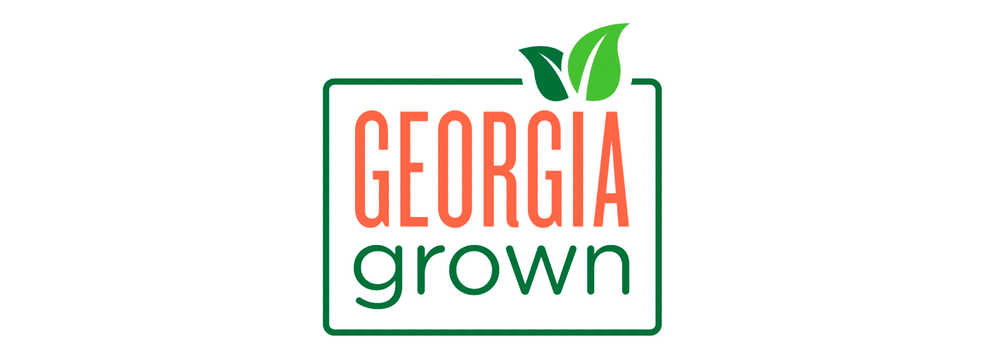
Sweet Grass Dairy is the home of Georgia's cheesemaking pioneers. Meet Jessica and Jeremy Little, the dynamic duo behind the farm-to-table cheese revolution in Thomasville. From pasture to plate, discover the art and science of crafting award-winning cheeses rooted in sustainable farming practices and innovative recipes. In this episode, you can savor the flavors of Sweet Grass Dairy's artisanal cheeses while gaining insight into their commitment to quality, sustainability, and community.

